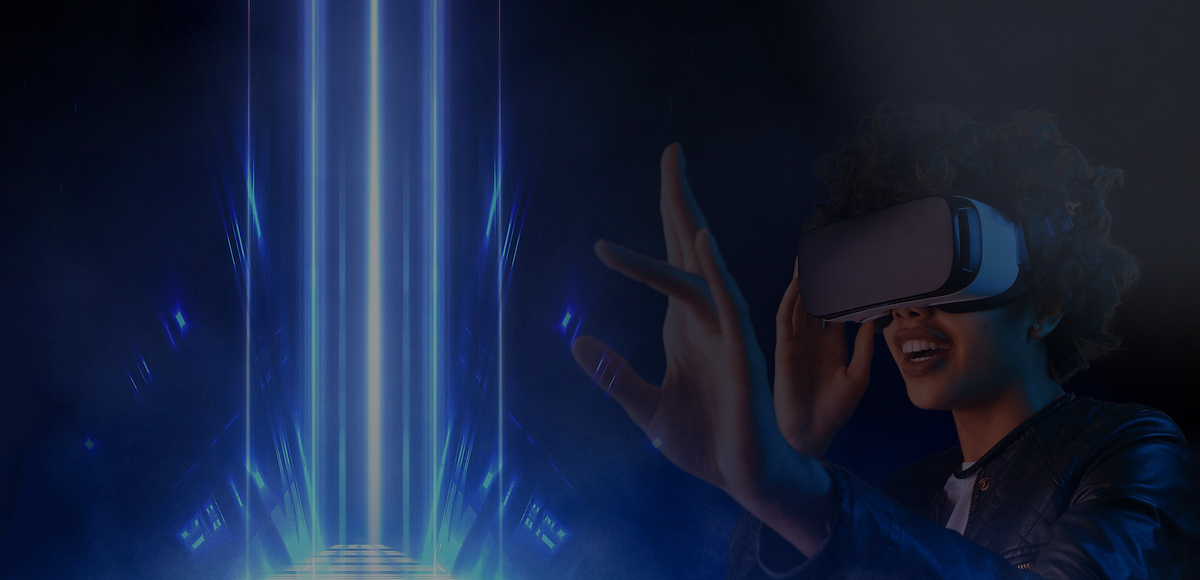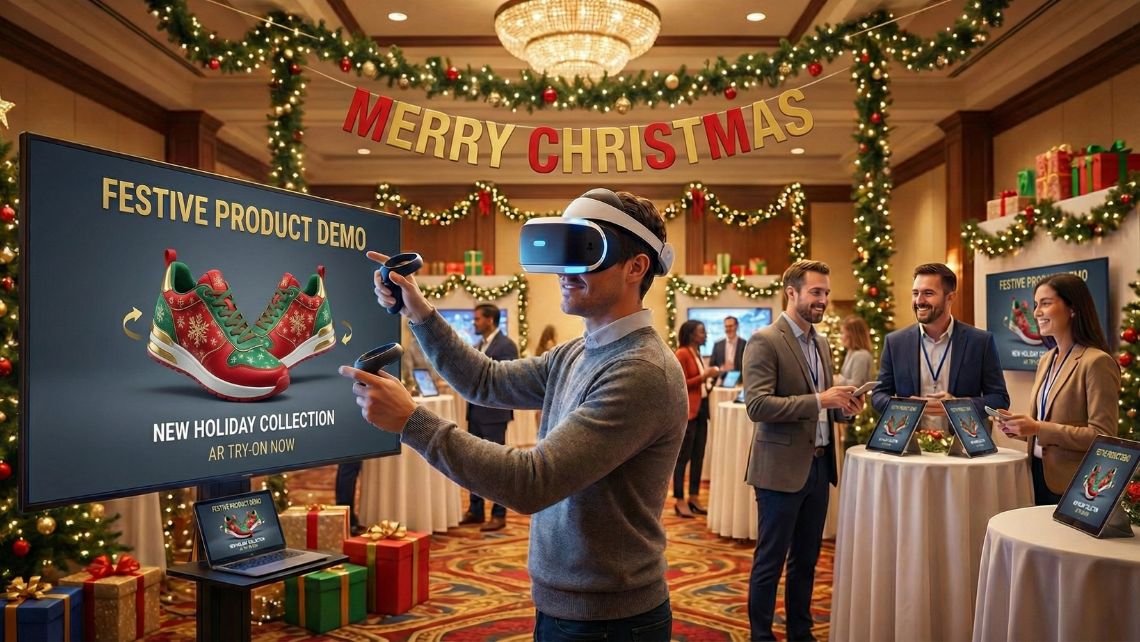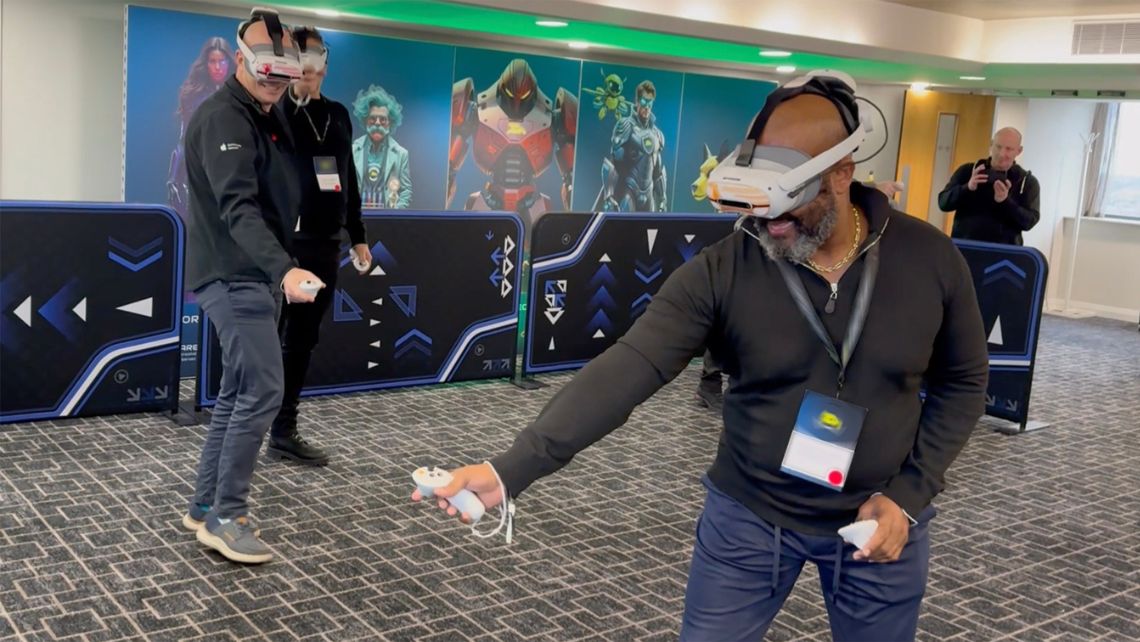
3D Animation: Transform Product Images into Christmas Gifts

Product images are the foundation of digital commerce, but when the festive season arrives, brands need more than static visuals to capture attention. At Christmas, consumer behaviour shifts dramatically, with shoppers actively searching for unique gifts and memorable experiences. A simple still photograph is rarely enough to stand out in crowded social feeds or ecommerce platforms. This is where 3D animation steps in, transforming the ordinary into something extraordinary.
Christmas campaigns are increasingly focused on storytelling, and 3D animated content allows brands to create narratives around their products that feel rich, seasonal, and emotive. Unlike traditional photography, 3D provides flexibility, enabling marketers to build entire festive scenes without the limitations of physical sets or costly reshoots. Snowfall, sparkling lights, or a magical unwrapping sequence can all be added digitally, aligning seamlessly with a brand’s seasonal identity.
The power of 3D animation lies in its scalability. From hero brand films to quick social cut-downs and looping visuals for product detail pages, assets created once can be repurposed across multiple channels. During a season where every day counts towards revenue, this efficiency is invaluable.
By elevating product images through animation, brands can evoke emotions, tell richer stories, and ultimately drive sales. As we explore further, it becomes clear why this shift is not just a creative choice, but a strategic necessity for UK retailers, luxury houses, and direct-to-consumer brands preparing for the Christmas rush.
How 3D Animation Turns Product Images Into Festive Bestsellers
From Shelf Appeal to Share Appeal
During Christmas, visual competition reaches its peak. Consumers scroll quickly, and only the most engaging content earns a second look. Static product images may showcase detail, but they struggle to evoke atmosphere. With 3D animation, however, a simple object can be surrounded by festive environments—snowflakes drifting across the frame, ribbons unwrapping gracefully, or light flares sparkling in synchrony with holiday music. These dynamic visuals make products not only appealing on the shelf but highly shareable across social media platforms.
Storytelling that Sells
Beyond attention-grabbing visuals, 3D animation allows brands to craft narratives around their product images. A simple mug, for example, can be animated to appear steaming with hot chocolate as a cosy fire crackles in the background, instantly associating the item with warmth and comfort. Similarly, beauty products can be elevated with glittering snowfalls and magical lighting effects, making them feel like essential Christmas gifts.
Creating Urgency through Atmosphere
The Christmas shopping window is short, and urgency plays a key role in conversions. 3D animation enables marketers to design visuals that reflect scarcity and exclusivity. Animated countdown clocks, shimmering limited-edition packaging, or festive “only this season” tags can be layered onto product images to create excitement. This ensures shoppers not only notice the product but feel compelled to act quickly.
Turning Existing Photography into Production-Ready 3D Assets
One of the most common challenges brands face during Christmas campaigns is how to convert existing assets into compelling festive content. Often, a business may only have flat product images available from catalogue shoots. 3D animation provides solutions to this issue by transforming these assets into fully interactive or cinematic visuals that are campaign-ready.
Photogrammetry from Multi-Angle Shots
Photogrammetry is a process that creates 3D models from multiple photographs taken at different angles. By applying this technique, brands can build digital twins of their products without needing CAD files or re-engineering assets from scratch. Once reconstructed, textures and festive lighting can be added, allowing a simple still image to evolve into a looping animation or a detailed turntable view.
For Christmas campaigns, this means an existing set of catalogue images could be repurposed into animated content showing a product surrounded by virtual snow, ribbons, or warm ambient light — all created digitally with no reshoots required.
AI-Assisted Single-Image Modelling for Speed
Advances in artificial intelligence are making it possible to create 3D models from a single photo. While this approach is less precise than photogrammetry, it offers speed and efficiency that are valuable during the busy holiday window.
This kind of technology is particularly useful for social-first campaigns, where highly polished realism may not be as important as speed to market and creative volume. A fashion retailer, for example, could take a single handbag image and generate multiple animated variants for TikTok promotions within days, instead of commissioning new product shoots.
CGI Workflows for Scalable Production
For brands with large seasonal catalogues, investing in CGI workflows is the most scalable option. By building 3D versions of all products, retailers can introduce festive textures, colour variations, or packaging effects without any physical production. This approach allows them to present photorealistic product visuals while maintaining efficiency across hundreds of SKUs.
In a Christmas campaign context, the same workflow allows a retailer to take standard product images and transform them into multiple festive looks. Whether it’s a colourway swap for a limited-edition release or the addition of holiday props in the scene, these changes can be made quickly, ensuring campaigns remain fresh throughout the peak season.
Production Workflow with Immersive Studio
Transforming product images into 3D animated content requires both creativity and technical precision. At Immersive Studio, the workflow is built around efficiency, ensuring brands can launch their Christmas campaigns on time without compromising quality. The process moves from asset intake to delivery, with each stage carefully designed to maximise festive storytelling.
Intake and Asset Audit
The first step is to review what assets a brand already has. Many retailers rely heavily on existing product images from catalogue or ecommerce shoots. These are assessed alongside CAD files, packaging dielines, and brand guidelines to determine the best route to 3D. This stage is crucial in understanding whether a project will benefit most from photogrammetry, AI-assisted modelling, or a full CGI build.
Modelling, Look-Dev, and Lighting
Once assets are confirmed, the modelling process begins. For brands starting with product images, 3D models are developed using detailed textures and materials to ensure realism. Look development then refines the finish, ensuring everything from reflections to fabric creases feels accurate. Lighting plays a critical role, with HDRI environments or digitally created festive sets used to evoke warmth, sparkle, and holiday atmosphere.
Animation and Rendering at Scale
The animation stage introduces movement and festive storytelling. Ribbons may unfurl to reveal a product, snowflakes can fall across the scene, or camera moves can highlight intricate details. Rendering is optimised for multiple outputs, from high-resolution hero films to lightweight looping assets for ecommerce platforms. This scalability allows brands to repurpose one core asset into dozens of campaign variants.
Delivery Formats for Ecommerce and Ads
Final assets are exported in platform-appropriate formats. A Christmas campaign may require cinematic 16:9 videos for YouTube, square 1:1 loops for Instagram, and vertical 9:16 edits for TikTok. Ecommerce platforms benefit from lightweight MP4 or WebM loops, ensuring product images come alive without slowing page speed. By preparing assets with versatility in mind, Immersive Studio ensures a brand’s festive creative fits seamlessly into every channel.
Where We Fit In
At Immersive Studio, the expertise lies in transforming existing assets into polished, festive-ready content. Whether a brand begins with detailed CAD files or simple product images, the studio provides full-service delivery from modelling to animation and optimisation. More details on the process and capabilities can be found on our 3D Product Animation & Asset Creation service page. This ensures that every Christmas campaign can achieve maximum impact, regardless of starting assets or budget.
Festive Creative Treatments that Convert
The Christmas season is about emotion, storytelling, and the magic of giving. When product images are transformed into 3D animation, brands can apply creative treatments that make items feel gift-worthy and emotionally engaging. These treatments not only elevate visuals but also directly influence conversion rates.
Unwrap and Reveal
One of the most effective creative approaches is the unwrapping sequence. Digital ribbons, paper folds, and festive sparkles can be animated to reveal products in a way that feels both magical and premium. A beauty brand, for instance, might showcase a fragrance bottle being lifted from a glowing gift box, with festive particles shimmering around it. This technique taps into the anticipation associated with Christmas gifts, making products feel instantly more desirable.
Seasonal Set-Dressing Without Reshoots
3D animation allows brands to dress products in festive contexts without needing costly reshoots. Garlands, glowing fairy lights, frosted windows, or cosy fireplaces can all be digitally added to create warmth and atmosphere. A campaign could start with neutral product images and then evolve into multiple regional festive variants, ensuring consistency across markets. This flexibility is particularly valuable for international retailers managing diverse Christmas calendars.
A strong reference here is Burberry’s digital-first Christmas push, where festive props and seasonal backdrops were introduced to elevate the sense of occasion in digital experiences. By integrating these set designs virtually, the brand maintained luxury standards while keeping costs efficient.
Limited-Edition Colourways and Personalisation
Christmas is the season for exclusivity, and digital workflows make it simple to create limited-edition variants. By swapping textures, adding engravings, or applying metallic finishes, product images can be repurposed into festive editions without manufacturing physical prototypes.
For high-value gifting categories, personalisation adds another layer of desirability. Monogrammed engravings or animated initials appearing on packaging can create a sense of uniqueness that strongly appeals to gift buyers. When executed in 3D, these customisations are quick to implement and cost-effective, making them a powerful driver of festive sales.

Channel Activation: From PDPs to AR Try-Ons
Once festive assets are produced, the next step is activation across customer touchpoints. Product images that have been animated or converted into 3D visuals can serve very different roles depending on the platform. A Christmas campaign becomes most effective when every channel — from ecommerce to social and outdoor — carries consistent creative energy.
PDP Motion Loops and Interactive 360s
Product detail pages are critical in the customer journey, and yet too often they rely solely on static product images. By adding short motion loops or interactive 360-degree spins, brands can significantly increase dwell time and customer confidence. For Christmas campaigns, looping assets could show a toy spinning under twinkling lights or jewellery glistening as a festive sparkle passes over it.
Interactive 360s go even further, letting customers explore a product from every angle. This sense of transparency builds trust, especially during the holiday season when gifting decisions carry emotional weight. Retailers using motion on PDPs create experiences that encourage both exploration and purchase.
Web 3D and AR
Web-based 3D models and AR try-ons allow customers to experience products in new dimensions. Assets derived from product images can be exported into formats like GLB, GLTF, or USDZ, making them compatible with browsers and mobile apps. Burberry’s virtual scarf try-on is a prime example of how luxury brands are enhancing festive engagement by merging ecommerce with digital interaction.
For Christmas, AR can be a powerful driver of sales. Imagine a customer previewing how a watch looks on their wrist with a festive snow animation layered in, or how a piece of furniture fits into their decorated living room. These experiences make products feel personal and relevant, helping brands convert browsing into buying.
Paid Social and DOOH
Paid social and digital out-of-home (DOOH) placements are where animated product images become shareable storytelling tools. TikTok, Instagram Reels, and YouTube Shorts thrive on movement, making them ideal for unwrapping animations or festive countdowns. Meanwhile, large DOOH screens in high-footfall areas like Oxford Street or Birmingham’s Bullring benefit from bold, looping animations that turn ordinary products into festive centrepieces.
Measurement and Optimisation for Peak Season
Launching festive campaigns is only the first step. The true value of animating product images lies in measuring performance and iterating creative assets for maximum return. By tracking the right metrics and applying agile optimisation, brands can ensure their Christmas content delivers measurable impact.
What to Track
Key metrics extend beyond impressions. Engagement measures such as view-through rates, click-through rates, and add-to-basket actions indicate whether animated product images are resonating with audiences. On product detail pages, time spent interacting with 360 models or motion loops offers a clear view of how animation influences behaviour.
Agile Variants
The fast pace of Christmas shopping means campaigns must adapt quickly. By producing multiple animated variants of the same product images, brands can test which treatments resonate most. Subtle changes in colour schemes, background lighting, or festive effects may influence performance across different audiences.
Seasonal Timeline Optimisation
Christmas campaigns follow a rapid timeline, from Black Friday through to last postal deadlines. Animated product images can be adapted across this journey — starting with broad storytelling in November, then shifting to urgency-focused creative in December. Countdown animations, limited-edition variants, and final “last chance to order” loops keep campaigns relevant and persuasive throughout the season.
This staged optimisation ensures that 3D content remains fresh while consistently driving conversions. By combining measurement with agile production, brands can guarantee their festive assets deliver both creative impact and commercial success.
Compliance, Brand Control, and Rights Management
As brands transform product images into festive 3D animations, it is vital to ensure compliance and brand consistency. The Christmas season is a high-stakes period, and any oversight in rights management or accessibility can damage both reputation and revenue. Careful attention to legal and creative controls helps protect assets while maximising their campaign potential.
Model Release and Intellectual Property
When product images involve people, even in background lifestyle shots, proper model releases must be secured before those images are used in 3D workflows. Intellectual property also comes into play when festive props or textures are introduced. Using copyrighted designs, such as branded ornaments or licensed Christmas music, without permission can expose campaigns to legal disputes.
Maintaining Brand Guidelines
Every product animated for Christmas must adhere to brand guidelines, from colour palettes to logo placement. Product images adapted into 3D can sometimes introduce inconsistencies if shaders or textures are not correctly calibrated. For example, a brand with a signature metallic gold may find that slight lighting variations result in off-brand tones. A well-managed workflow ensures that festive creativity never undermines the integrity of brand identity.
Accessibility and Inclusivity
Christmas campaigns must also be accessible to all users. Adding descriptive alt text to animated product images on ecommerce sites improves accessibility for visually impaired shoppers. Captions and subtitles on festive video ads ensure inclusivity across different platforms. Industry standards, such as the W3C accessibility guidelines, provide frameworks that help retailers make their campaigns more inclusive while still maintaining a festive spirit.
Rights to Repurpose and Reuse
3D animation offers opportunities for long-term value beyond Christmas. However, brands must secure rights to reuse product images and related assets for future campaigns. For example, an animated gift-box reveal used at Christmas could be adapted into a Valentine’s Day or spring campaign if rights are properly secured. Having this foresight not only protects campaigns legally but also ensures greater return on creative investment.
Budgeting, Timelines, and Risk Mitigation
Christmas campaigns are time-sensitive, and managing both cost and scheduling is essential. Turning product images into polished 3D assets requires upfront planning, clear budgeting, and contingency measures to ensure campaigns launch without disruption.
Realistic Lead Times
Timelines are one of the most overlooked aspects of festive planning. Creating animated assets from product images can take several weeks depending on complexity. Simple looping animations may be produced in days, but hero-level campaign films often require longer render times and multiple review stages. Planning content production in September or early October gives enough runway for approval, testing, and deployment ahead of Black Friday.
Budget Considerations
Budgeting for 3D animation varies based on complexity and intended usage. A basic animation of product images may cost significantly less than a cinematic hero film with particle effects and multiple scene changes. UK-specific research suggests that animation costs can range from a few thousand pounds for simple loops to tens of thousands for high-end campaigns (b2w breakdown; Educational Voice UK guide). Aligning budget with expected ROI is crucial, particularly for short but impactful festive campaigns.
Risk Mitigation Strategies
Christmas campaigns cannot afford delays. Risk mitigation starts with preparing backup render pipelines and allocating additional time for client feedback. When working from product images, unforeseen issues such as missing angles or low-quality files can slow production. Addressing these risks early ensures projects stay on track. Adopting flexible workflows — such as scaling down certain visual effects for faster delivery if deadlines tighten — allows campaigns to maintain impact even under pressure.
Value Beyond the Holidays
Investing in 3D animation for Christmas should not be seen as a one-off cost. Assets created from product images can often be repurposed into future campaigns, including spring promotions, summer sales, or evergreen ecommerce visuals. This long-term view spreads budget impact across multiple campaigns and maximises the ROI of festive creative investments.
Wrapping Up
Christmas campaigns are no longer just about presenting products in glossy catalogues. The shift from static product images to immersive 3D animation has redefined how brands communicate during the busiest retail season of the year. Animation makes products more than objects; it turns them into experiences, capable of evoking joy, anticipation, and festive magic.
The advantage lies in scalability. One carefully designed 3D asset can be reused across multiple platforms, from ecommerce pages to TikTok, Instagram Reels, and digital out-of-home screens. This ensures consistent storytelling without requiring multiple costly shoots. Brands like Burberry and John Lewis have already shown the power of combining digital innovation with emotional festive narratives, setting a standard that resonates across industries.
For retailers, luxury houses, and direct-to-consumer businesses alike, the message is clear: elevating product images through animation is not optional, but a strategic necessity in the modern marketplace. Partnering with experts such as Immersive Studio ensures that creative ambitions are matched with technical delivery, enabling brands to unlock the full potential of their festive campaigns.
Frequently Asked Questions - Product Images
Can you make a 3D model from photos for use in ads and ecommerce?
Yes. Photogrammetry and AI-assisted workflows make it possible to build accurate 3D models directly from product images. Multiple photographs taken at different angles can be combined to reconstruct a product digitally, while AI can sometimes generate a model from a single photo. This model can then be textured, animated, and integrated into Christmas campaigns.
How much does 3D product animation cost in the UK?
Costs vary depending on complexity, duration, and required output. Simple looping animations built from product images may cost only a few thousand pounds, while cinematic advertising assets with multiple scenes and effects may exceed tens of thousands. According to Educational Voice’s UK pricing guide and b2w’s cost breakdown, brands should budget realistically for timelines and expected ROI. The advantage of 3D is that once assets are built, they can be repurposed across multiple campaigns, making the investment stretch further.
How long does it take to create a 3D product video for a Christmas campaign?
Timelines depend on both project scope and existing assets. A looping animation of product images may take under a week, while a high-end Christmas film with animated set designs and particle effects may require four to six weeks. Allowing adequate time for approvals and optimisation is crucial, especially before peak retail moments like Black Friday. Starting early ensures campaigns launch smoothly.
Do 3D product videos help increase conversions on ecommerce pages?
Yes. Animated product images significantly increase engagement and trust on ecommerce pages. Shopify UK highlights how enhanced visuals such as motion loops and 360-degree spins improve conversion rates by giving shoppers greater confidence in their purchase decisions. During the Christmas period, when consumers shop under time pressure, these assets play a decisive role in driving conversions.
What is photogrammetry and how is it used in marketing content?
Photogrammetry is a process of creating 3D models from a series of photographs taken at different angles. In marketing, this method allows static product images to be reconstructed into digital models that can then be animated or integrated into virtual environments. For example, furniture brands can use photogrammetry to showcase products in festive living room scenes, complete with decorations and atmospheric lighting.
Which 3D file formats work best for web and AR try-on (GLB, GLTF, USDZ)?
For web and ecommerce integration, GLB and GLTF formats are most widely supported, offering lightweight file sizes without sacrificing quality. Apple’s AR Quick Look platform relies on USDZ, making it essential for iOS experiences. These file types allow product images transformed into 3D models to be used in interactive Christmas campaigns.
What’s the difference between CGI and 3D animation in advertising?
CGI, or computer-generated imagery, refers broadly to any digitally created visual element, whether still or animated. 3D animation, however, specifically refers to the process of animating those digital models. In Christmas campaigns, CGI might involve creating a static festive render of product images, while 3D animation would introduce motion such as ribbons unwrapping or snow falling. Both approaches add value, but animation tends to deliver stronger engagement because it captures attention on dynamic platforms like TikTok, YouTube, and DOOH screens.


